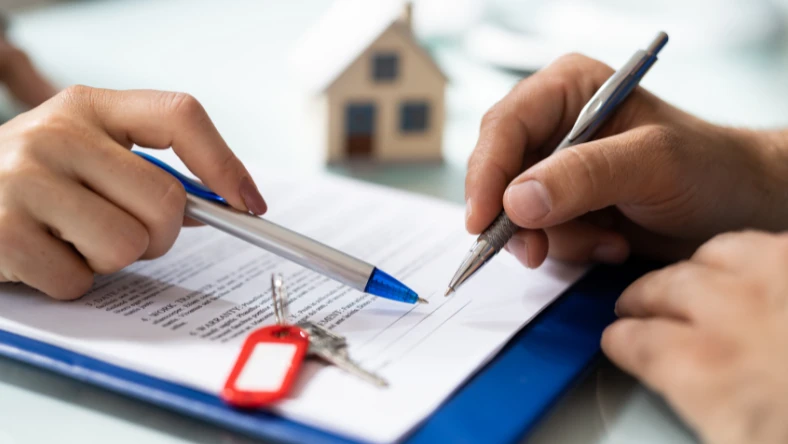Getting Rid of Private Mortgage Insurance
Eliminating Private Mortgage Insurance (PMI)
Private mortgage insurance (PMI) can add hundreds of dollars to your monthly mortgage payment, making homeownership more expensive. Fortunately, there are several ways to remove PMI and reduce your costs. Whether through automatic cancellation, refinancing, or reappraisal, understanding your options can help you save money.
Getting Rid of Private Mortgage Insurance
When purchasing a standard mortgage from a private lender, you may be required to purchase private mortgage insurance (PMI). However, PMI can be costly, usually charging you around 0.5% to 1.0% yearly interest on your loan amount. The interest rate may seem like a small, even negligible amount of money, but if you are purchasing a mortgage for a home, it can be a substantial sum of money.
For example, if you purchase a $500,000 home, you could be charged $2,500 and $5,000 a year in mortgage insurance, or approximately $210 to $420 every month. Even for one year of payments, this can be a significant chunk of your money and added together with all of your other bills and expenses; it can add up.
So, it is no wonder why people want to get rid of PMI as quickly as possible. Luckily, you can take specific steps to eliminate PMI as promptly as possible. In this article, we will go over what PMI is, its cost, and how to get rid of it.
Defining PMI
Private mortgage insurance is an additional payment to your mortgage that usually ranges between 0.5% to 1.0% of your mortgage balance every year. In addition, PMI is in place to protect your private lender if the home buyer defaults on their mortgage.
PMI Costs
In most cases, homebuyers who use a standard mortgage with a down payment of less than 20% must purchase PMI. In addition, PMI costs depend on the amount of risk a lender has to take on: low risk means lower costs, while high risk usually equates to higher PMI costs.
Factors that can affect your PMI costs include your down payment amount, credit history, and type of loan.
- Down payment percent. For example, someone paying a 15% down payment may have a lower rate than someone putting down a 5% down payment on their home. Smaller down payment amounts pose higher risks to private lenders. Therefore, they offset this risk with a higher PMI in the form of larger mortgage payments.
- Credit history. Credit history tracks how responsible you have been in past payments related to borrowing money. Individuals with high credit scores will generally receive lower PMI rates when compared to those with low credit scores.
- Type of loan. Fixed-rate loans are a lower risk due to a fixed loan rate, meaning the rate will not change. Fixed-rate generally yields lower PMI costs because there is less risk involved. Adjustable-rate mortgages, on the other hand, are at higher risk than fixed-rate loans. They are at higher risk because they can change, perhaps to a rate that makes making your monthly payment challenging.
Getting Rid of PMI
It is no surprise that anyone that can get rid of PMI generally wants to. Paying for a mortgage alone can be a heavy burden without the weight of additional costs that PMI brings about. There are four standard ways to get rid of your PMI:
- Automatic cancellation. Under the Homeowner Protection Act (HPA, also called the PMI Cancellation Act), your mortgage lender is obligated to cancel your PMI when you either pay off 78% of the original purchase price of your mortgage or when you've reached the half-way point of your originally scheduled mortgage. So, for example, your mortgage lender would cancel your PMI if you are ten years into a 20-year mortgage.
- Request PMI cancellation. Once your loan balance reaches 80% of the original purchase payment, you can request to have your PMI canceled rather than waiting. If you are close to the 80% mark and have the ability to, you might want to make additional payments to push your payment amount up to 80% so that you can cancel PMI earlier than planned.
- Refinance. Refinancing is a great option when mortgage rates are low. If your home's value has increased since you purchased the house, what you owe may be less than 80% and qualify you to cancel your PMI.
- Reappraisal. Like refinancing, appraisal involves reevaluating the value of your home. In a real estate market that is quickly gaining, you may be ahead of the original schedule set to eliminate your PMI. If you have owned the home for five or more years and you owe 80% or less of your loan balance for the new valuation
What's Next?
PMI can be a costly addition to your mortgage, but
strategic planning can help you eliminate it faster. Whether through
extra payments,
refinancing, or
reappraisal, reducing PMI can free up funds for other financial goals.
Get a Rate Quote
FAQs: Eliminating Private Mortgage Insurance (PMI)
-
PMI is an insurance policy that protects lenders if a borrower defaults on their mortgage. It is typically required for
conventional loans with a
down payment of less than 20%.
-
PMI usually costs 0.5% to 1.0% of the loan amount annually. For a $500,000 home, this could mean $2,500 to $5,000 per year in additional costs.
-
Yes. Here are a few options:
- Make a 20% down payment
- Consider a FHA loan or other government-backed programs
- Explore lender-paid PMI options (though these may come with higher interest rates)
Saving for a larger down payment is often the most cost-effective way to avoid PMI.
-
If your home’s value has increased, refinancing into a new loan with
at least 20% equity can remove PMI. Explore
Salem Five’s refinancing options to see if this strategy works for you.
© Fintactix, LLC 2025

